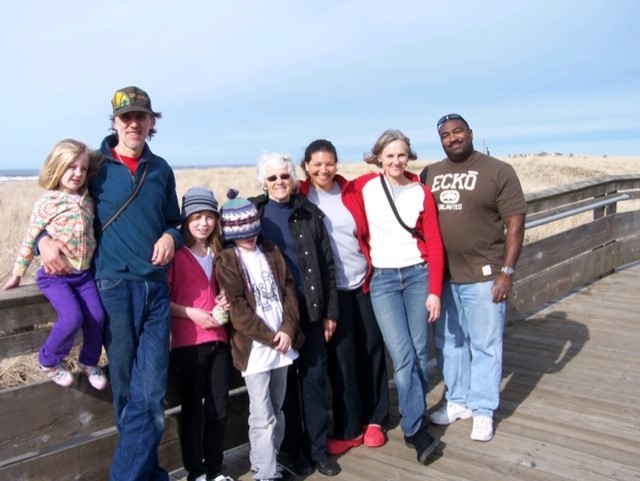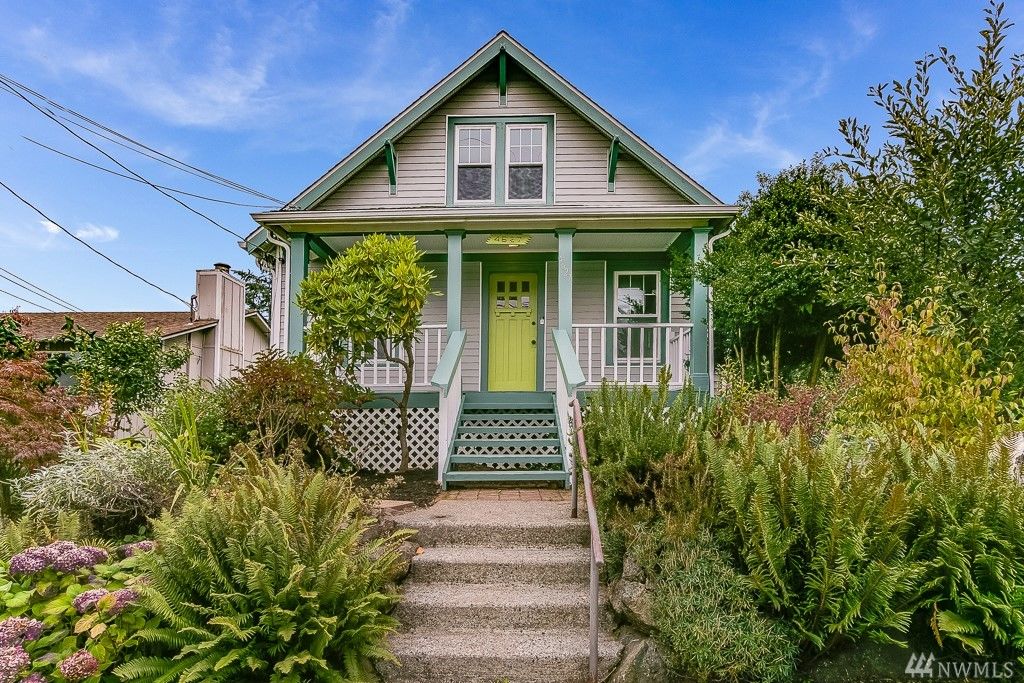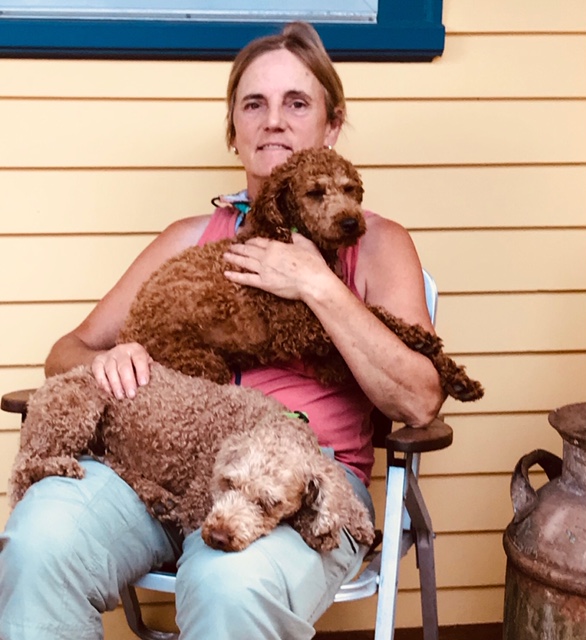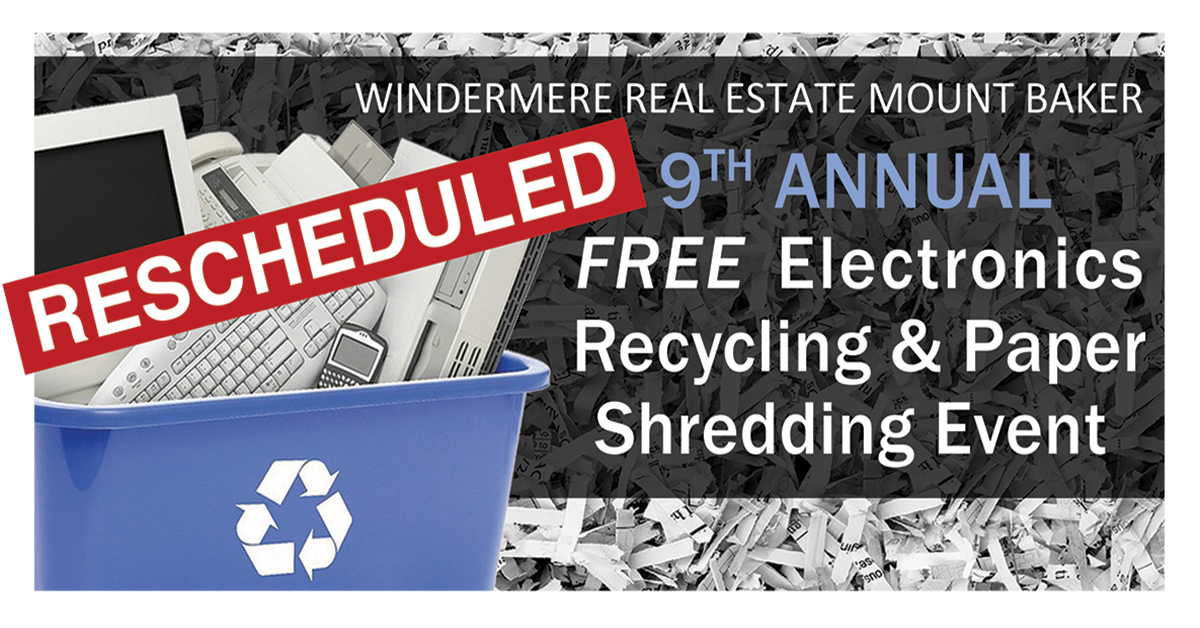House vs. Townhouse vs. Condo


Deciding between a house, townhouse, and condominium can be a difficult process. Knowing how their characteristics align with your life and goals as a homeowner will help guide you to the right choice. What differentiates houses, townhouses, and condominiums? House:
- Detached houses offer the most freedom and privacy of the three housing options. They provide the opportunity to personalize your home as desired, without rules from a governing body like HOA. Houses don’t share walls like townhouses or condos, and typically offer larger outdoor spaces as well.
- Situated on their own lots, owning a house leaves the responsibility of maintaining and improving the structure and accompanying land to the homeowner. Between a down payment, closing costs, and other homeowner fees, the upfront costs of owning a house can be significantly higher than a townhouse or a condominium.
Townhouse:
- A townhouse is typically a narrow, multileveled structure connected to others in a row or block, typically with a small parcel of property in front of or behind the home. Somewhere between a house and condo, townhouses may be the best of both of worlds for some homeowners.
- Like a house, townhouse owners are responsible for exterior (roof and siding) maintenance and repair. Most townhouses tend to have a small footprint and modern upgrades, with lower HOA fees than condos due to a lesser focus on shared amenities.
Condominium:
- Condominiums are divided, individually owned units of a larger structure. Due to their smaller size and because they come with no land, condos are typically less expensive than a townhouse or a house. However, HOA fees combined with a monthly mortgage payment can increase the cost of condominium living, depending on the amenities offered in a building. Unique to condo ownership, the exterior of the units is considered a common area with ownership shared among the condo owners in the building.
- As a condo owner, you are only responsible for the inside of your unit. With this decreased maintenance comes less exclusivity and privacy. Condo owners live in close proximity and typically share amenities like gym and pool access, laundry, and other facilities.
How does your home align with your life?House:
- For homeowners looking at their property as an investment in their financial future, houses are a strong choice. Houses allow homeowners to plan long-term with the knowledge that their home will build equity over time.
- If you are planning on putting down roots and starting a family, houses provide the best opportunity to grow into your future and are better suited to handle significant life changes.
Townhouse:
- For people looking for more space than a condo but are not quite ready to make the jump to a single-family home, townhouses are the perfect fit. They present a great steppingstone for first time home buyers or buyers who simply don’t want the responsibility of taking care of a larger, standalone home and yard.
- Townhouses are often located in residential neighborhoods. They are fitting for those looking to graduate from rented dwellings in city centers or metropolitan areas yet maintain greater ownership flexibility than a single-family house.
Condominium:
- Condominiums appeal strongly to homeowners looking for a low-maintenance residence, with access to shared amenities amongst a community. Condos are usually found in denser areas closer to downtown centers, shopping, and entertainment.
- They are a better fit for buyers seeking metropolitan surroundings than a detached home, which is typically found in a more suburban or rural environment. Given their proximity to city/town centers and mass transit, condos present the opportunity of a shorter commute for those who work in downtown areas.
After all the research, do what feels right. Whether it’s a house, townhouse, or a condo, work with your Windermere agent to find the best option for you and your future.
What is Wire Fraud and How to Avoid It


A fast-growing form of cybercrime, wire fraud has led to major losses for homebuyers in recent years. Get to know what it is and what steps you can take to avoid it.
What is wire fraud?
Real estate wire fraud is a scam that targets buyers while making payments during the home buying process. Attackers have taken advantage of the fact that there are several people and entities involved in real estate transactions. Between real estate agents title and escrow companies, mortgage lenders and more, there are many steps, some of which involve sharing financial information and transferring money. This gives ample opportunity for scammers to slip through the cracks somewhere along the line.
The timing of wire fraud is typically during closing using a sophisticated phishing scam. Attackers apply the use of fake emails, phone numbers, or websites, often posing as the buyer’s real estate agent and directing them to allocate funds to a fraudulent account. Because the attacker will have scanned, scrubbed, and lifted your personal information in preparation for the scam, their forms of communication can often look familiar and legitimate.
The mission of the cyberattack is to get your funds into an account the attacker owns. To do this, it is common for them to say that you had previously sent funds incorrectly, that they were never received, that there are new instructions for payment, or that there has been a last-minute change in the closing process. These are all major red flags. It is imperative to take extra caution during the final steps of purchasing a home because transfers, once initiated, are difficult to remedy and can delay your closing process.How can I avoid wire fraud?
- Get to know the closing process: Talk with your Windermere agent ahead of time about what to expect throughout the closing process. Discuss payment options with your lender and ask specifically about instructions for wiring funds. It is safer to share this information over the phone than through email, as scammers could accumulate this information to use against you.
- Record contact information: Keep a list of the personnel involved in your closing process. Beyond your real estate agent, keep a record of contacts at your mortgage lender, title company, and attorney’s office. In the event that someone new reaches out to you with a request, confirm their identity with one of your contacts.
- Call to confirm: Call to confirm wiring instructions before sending the transaction through. Talk to a trusted representative and ask them to repeat the information to verify its legitimacy. After sending the funds, make same-day follow-up calls to ensure they were received.
- Trust your gut: If you receive an iffy email or phone call, trust your gut. If something doesn’t feel right, it’s the perfect time to reach out to your contacts, discuss your hesitancy, and get advice before proceeding.
The threat of wire fraud emphasizes the importance of working closely with everyone involved in the purchase of your home. If you believe you have been scammed, contact your bank or wire transfer company immediately and request that they issue a recall notice for your wire. Contact the FBI’s Internet Crime Complaint Center and report the activity with as much information as you can gather. For more information about how to protect yourself from wire fraud, visit the National Association of Realtors’ Wire Fraud resources page.
SELLER SUCCESS STORY: A family & a community come together to help an 88yo spitfire make a big move


My client Annie, who I have known for over 20 years, needed to sell her little house in Columbia City, as it was just getting too much for her in terms of upkeep and expense. As a professional and still-working gardener, you can imagine that her yard was fabulous and huge, almost two lots.
The new zoning of RSL (M) in her area potentially added a lot of value. If you have a 4,000 square foot + lot, you can build additional dwellings. In the case of Annie’s lot, another two, 2,000 square foot houses could be built while retaining the existing house. Or four units if her sweet 1900 craftsman was knocked down.
We are all seeing houses being built around existing structures and everyone has mixed feelings about this kind of development, with the ‘NIMBY” (not in my back yard) folks on one side and the others saying we need more high density housing to deal with our growing population and affordability issues. I have to say, I can see both sides and have mixed feelings.
I discussed the zoning info with the family, and the potential added value of the lot. It was a dilemma, as they wanted to make as much money from the sale of the property for their mother and her good friend who had helped Annie buy the house. However, Annie’s daughter lived next door and really did not want to see her mom’s house and the beautiful gardens destroyed, or lose her own privacy.
I pointed out to the family that they got to choose who they sold the house and as developers/builders are not included in the Fair Housing laws, they are not a protected class.
Getting the house ready for sale was an amazing family effort and took several months of helping Annie purge 20 years of accumulated stuff; it was also, of course, incredibly emotional for Annie as she loved her house and would have preferred to stay, but it was just not feasible.
We all realized it would be best for her to have moved out by the time of the sale for her own emotional well- being, plus the house needed refreshing. Luckily one of her daughters had a rental house that Annie could move into temporarily.
The house needed an interior and part exterior paint job and again several of Annie’s family members took on the job and finished it in record time.
I had the house staged and it looked super cute; it was only 750 square feet, but it is amazing how furniture can make a place look bigger!
We received seven offers, just one from a developer, and it was not even the best offer so that made it easier. Annie and her family felt really good about the offer they accepted as the buyers seemed like they would be a good fit as neighbors and community members, and the house sold for almost $100,000 over the list price.
Annie really wanted to stay in the neighborhood and have a place with a garden. Her friends set up a Go Fund me, to help her with extra income, and an earnest search was made. Annie found an apartment with a lovely garden in our area that is more manageable and I am so happy for her and so grateful to her family and friends for really being there for their mom in such a hard time
Transitions are never easy but, when you are 88, especially hard, although Annie, with her inimitable spirit, did say she was ready for a change!
Western Washington Real Estate Market Update

The following analysis of the Western Washington real estate market is provided by Windermere Real Estate Chief Economist Matthew Gardner. We hope that this information may assist you with making better-informed real estate decisions. For further information about the housing market in your area, please don’t hesitate to contact your Windermere agent.

REGIONAL ECONOMIC OVERVIEW
Employment numbers in Western Washington continue to improve following the massive decline caused by COVID-19. For perspective, the area shed more than 373,000 jobs between February and April. However, the recovery has been fairly robust: almost 210,000 of those jobs have returned. Unemployment levels remain elevated; the current rate is 8.2%. That said, it is down from 16.6% in April. The rate, of course, varies across Western Washington counties, with a current low of 7.2% in King County and a high of 11.2% in Grays Harbor County. The economy is healing, but the pace of improvement has slowed somewhat, which is to be expected. That said, I anticipate that jobs will continue to return as long as we do not see another spike in new infections.
HOME SALES
- Sales continued to improve following the COVID-19-related drop in the first quarter of the year. There were 25,477 transactions in the quarter, an increase of 11.6% from the same period in 2019, and 45.9% higher than in the second quarter of this year.
- Listing activity remains woefully inadequate, with total available inventory 41.7% lower than a year ago, but 1.6% higher than in the second quarter of this year.
- Sales rose in all but two counties, though the declines were minimal. The greatest increase in sales was in San Juan County, which leads one to wonder if buyers are actively looking in more isolated markets given ongoing COVID-19-related concerns.
- Pending sales—a good gauge of future closings—rose 29% compared to the second quarter of the year, suggesting that fourth quarter closings will be positive.

HOME PRICES

- Home-price growth in Western Washington rose a remarkable 17.1% compared to a year ago. The average sale price was $611,793.
- When compared to the same period a year ago, price growth was strongest in Mason, Island, and San Juan counties. Only one county saw prices rise by less than ten percent.
- It was even more impressive to see the region’s home prices up by a very significant 9.4% compared to the second quarter of 2020. It is clear that low mortgage rates, combined with limited inventory, are pushing prices up.
- As long as mortgage rates stay low, and there isn’t an excessive spike in supply (which is highly unlikely), prices will continue to rise at above-average rates. That said, if this continues for too long, we will start to face affordability issues in many markets.

DAYS ON MARKET
- The average number of days it took to sell a home in the third quarter of this year dropped two days compared to a year ago.
- Snohomish County was the tightest market in Western Washington, with homes taking an average of only 16 days to sell. All but two counties—Lewis and San Juan—saw the length of time it took to sell a home rise compared to the same period a year ago.
- Across the region, it took an average of 36 days to sell a home in the quarter. It is also worth noting that it took an average of 4 fewer days to sell a home than in the second quarter of this year.
- The takeaway here is that significant increases in demand, in concert with remarkably low levels of inventory, continue to drive market time lower.

CONCLUSIONS

This speedometer reflects the state of the region’s real estate market using housing inventory, price gains, home sales, interest rates, and larger economic factors.
High demand, favorable interest rates, and low supply clearly point to a seller’s market in Western Washington. As such, I am moving the needle even more in favor of sellers.
As I suggested earlier in this report, although the market is remarkably buoyant, I am starting to see affordability issues increase in many areas—not just in the central Puget Sound region—and this is concerning. Perhaps the winter will act to cool the market, but something is telling me we shouldn’t count on it.
ABOUT MATTHEW GARDNER

As Chief Economist for Windermere Real Estate, Matthew Gardner is responsible for analyzing and interpreting economic data and its impact on the real estate market on both a local and national level. Matthew has over 30 years of professional experience both in the U.S. and U.K.
In addition to his day-to-day responsibilities, Matthew sits on the Washington State Governors Council of Economic Advisors; chairs the Board of Trustees at the Washington Center for Real Estate Research at the University of Washington; and is an Advisory Board Member at the Runstad Center for Real Estate Studies at the University of Washington where he also lectures in real estate economics.
The Remote Worker’s Home Buying Process


The pandemic’s influences on home life are far-ranging, prompting buyers to look at home ownership through a new lens. Remote work has created a paradigm shift in the wants and needs of homebuyers. Here’s what the remote worker should keep in mind when looking to buy.
Location
The location, location, location cliché has taken on new meaning for homebuyers who work from home. Because remote work gives us the opportunity to work from anywhere, home searches are expanding. Work commute times typically play a significant role in the home buying process; however, many buyers now have the option to view homes further away from their places of work.
Those who previously dreamed of the quiet life, but didn’t want the commute that came with it, are now able to make a move toward a more suburban environment. If you prefer to be away from the hustle and bustle of a downtown area but don’t want to feel isolated, search for properties in the suburbs with active town centers.
The proper space
When COVID-19 began sending workers home in the early months of 2020, homeowners worldwide discovered their varied level of preparedness for remote work. Some had spacious home offices and were able to make the transition easily. Others had to create makeshift workspaces out of living rooms or bedrooms. What we have learned is that a dedicated workspace is paramount to productive remote work, its importance emphasized by the unknown timeline of a return to working in-person in many parts of the country. Before you buy:
- When searching for homes, understand that a home office situated in an open floor plan is more prone to distraction.
- Look for features such as an additional bedroom, finished basement, or bonus room that offer ample space to create your remote work environment.
- Having a designated space you can associate solely with work will not only drive your focus but helps to balance your home and work life. It allows you to wrap up the workday, leave your home office, and easily transition back into the goings on of your household.
After you buy:
- Light it up: You’ll want plenty of light in your home office to stay fresh throughout the work week. If you are next to a window, let in as much natural light as possible. Add in desk and floor lamps to brighten your space.
- Work comfortably: While working at home, it’s easy to sit in one place for hours on end. Shop for comfortable desk chairs that provide proper lumbar support. Explore alternatives to desk chairs like yoga balls and standing desks.
- Personalize: Adding personal touches will help to make your home office feel comfortable. Inspirational quotes, your favorite artwork, and pictures of loved ones are all types of décor that will keep you inspired in your remote work.
For all these considerations and more, talk with your Windermere agent about how your remote work is shifting where you’re looking for a home and what you’re looking for when it’s time to move there.
JUST LISTED: Adorable 1923 Craftsman with Rocking Chair Front Porch


4627 S. Orchard St.
Seattle, WA 98118
Listed at $655,000
- Beds: 5
- Baths: 3
- SQFT: 2,030
- MLS #: 1674768
- Taxes: $5,101 (2020)
- Lot Size: 3720 SQFT
- Year Built: 1923
- Community: Brighton
Adorable 1923 craftsman complete with a rocking chair front porch, on a quiet street in the Brighton/Othello Station Neighborhood. Spacious & bright open floor plan on the main with a dining room, big kitchen with butcher block counters and a gas range, plus a 4th bedroom or office & a ½ bath. There are three bedrooms upstairs with good ceiling height, fir floors and a bathroom with clawfoot tub. The lower level has a one-bedroom, ¾ bath apartment with big windows for great light & a separate washer & dryer. Updated electrical/plumbing, newer vinyl double pane windows & main flooring. Huge ‘covered’ deck out- back, perfect for safe gatherings. Plenty of garden space, with veggie beds and fruit trees. Short walk to parks, light rail, eateries & grocery stores + easy access to freeways.
Information provided as a courtesy only, buyer to verify. For more, go here.
A Guide to Going Low-to-Zero Waste


Making the switch to a more sustainable household won’t happen overnight, but there are simple steps you can take to cut down on your home’s waste.
Start your waste-reducing process by getting to know your local disposal guidelines. What you can recycle varies at both the state and city level. Check your local municipality’s website for recycling rules and more information, like whether you need to separate your recycling and if your community accepts food and yard waste for composting. Waste-reducing principles Instilling some basic principles of waste reduction into your household will create a solid foundation to build upon.
- Only buy what you will eat. Food waste is a common problem in households everywhere, and the best remedy is to plan ahead before you take your next trip to the grocery store. This method of planning meals will reduce the chances of throwing away unused food items and minimize your food waste overall.
- Keep your recycling clean. It doesn’t take much time to give your recyclables a quick rinse, but it makes a big difference at the recycling center. Avoid recycling items like plastic bags, greasy take-out food containers, and batteries, which contaminate the rest of your recycling.
- Use containers for drinks. Bottled water and paper coffee cups are wasteful and, unfortunately, ubiquitous. By purchasing a durable metal or glass water bottle and a thermos for coffee, you will greatly reduce the waste that comes as a byproduct of daily beverages.
In-home waste reduction Reducing waste in the kitchen, bathroom, and yard will make a significant difference in the amount of overall waste generated at home. Kitchen
- Reusable containers: Adding plastic and glass containers to your kitchen repertoire will not only help to reduce food waste, but they will decrease your use of plastic. Mason jars are useful for storing bulk items such as rice, beans, and oatmeal.
- Single-use alternatives: Single-use items like paper towels, paper plates, and plastic cups can be replaced by reusable alternatives. Use kitchen rags to clean up instead of paper towels and hand wash all plates and cups when possible.
- Countertop compost: Set up a small compost bin on your countertop to ensure all compost is accounted for during food prep. When the container is full, take it outside to a larger outdoor compost pile or container.
Bathroom
- Cut down on plastic: For common bathroom items like shampoo, conditioner, and body wash, consider buying in bulk and using a personal container for each. This saves money and reduces the amount of plastic on your bathroom shelves. You can also look for similar products in bar form.
- Continue to recycle: Your home’s recycling practices should go beyond the kitchen. Place a recycling container next to all bathroom garbage bins throughout the house to ensure you dispose of recyclable products properly.
- Reusable razors: Plastic razors have a short shelf life and pose serious recycling problems. Explore more eco-friendly shaving products next time you buy. Look for companies with razors that last and offer subscriptions for replacing blades.
Yard
- Compost: Composting is one of the best things you can do to help reduce waste. Fruits and vegetables, eggshells, coffee grounds, as well as things like yard trimmings, houseplants, and fireplace ashes are all compostable. If you don’t have the space for an outdoor compost, see what community composting options are available near you.
- Other: If you live in a rainy climate, explore installing rainwater catchments in your home. Check for local regulations and tips on preventing pollution before proceeding with any rainwater harvesting.
For additional tips on how to reduce waste at work, at home, and in your community, visit the Environmental Protection Agency’s guide here: Reduce Waste – EPA.
How to Have Loads of Halloween Fun without Trick-or-Treating


With new Halloween guidelines just issued by the U.S. Centers for Disease Control and Prevention (CDC) showing that door-to-door trick-or-treating, indoor haunted houses, costume parties and “trunk or treating,” where children go from car to car to receive treats, are considered “higher risk activities” that should be avoided this year due to the COVID-19 pandemic, here are 7 ways to have loads of Halloween fun without risking exposure.
- pumpkin carving
- decorating your house
- hosting a virtual costume contest
- having an outdoors Halloween scavenger hunt and having a “scavenger hunt-style trick-or-treat search” indoors with members of your household
- small, outdoor costume parades
- outdoor Halloween movie nights where attendees are spaced at least six feet apart
- participating in one-way trick-or-treating that includes individually wrapped treats and social distancing
Masks:
- While masks are a Halloween staple, a costume mask is not a substitute for the types of cloth face masks that protect people from the virus, according to the CDC.
- People should also not wear a costume mask over a protective cloth mask because of possible breathing difficulties, warns the CDC.
Screaming:
Because COVID-19 is spread through particles in the air, the CDC has issued a special warning for another staple of Halloween festivities: Screaming.
“If screaming will likely occur, greater [social] distancing is advised,” the CDC advises. “The greater the distance, the lower the risk of spreading a respiratory virus.”
SELLER SUCCESS STORY: Urban Sanctuary in Southeast Seattle


My client Alice, a professional gardener, artist, carpenter, and all-around super woman, I am not sure what this woman cannot do, had created, over the past 20 years, an incredible urban sanctuary in southeast Seattle.
She decided to sell her house during the pandemic for a couple of reasons, for several years Alice’s mother had been living in the main house as well as a couple of roommates and Alice lived in an amazing Detached Accessory Dwelling Unit (DADU) that she had created. But when Covid 19, hit her mother moved to Whidbey Island, somewhat reluctantly, but Alice just felt it was safer for her as she could live with one of her brothers in a more isolated way.
Alice was already feeling like the house and property were getting too much for her to manage and with her mother gone and the prospect of having to get more roommates at a time when it felt unsafe. She decided it was time to sell, we had a couple of false starts, but Alice finally decided she really wanted to get out of Seattle and move to a more rural place.
So, we started to make preparations. As you can imagine, Alice had a lot of stuff to go through after twenty years, plus lots of things that her mother, who had spent a lot of time teaching overseas, had left. Being the industrious woman that she is, she held several yard sales and was able to sell a lot of furniture, antiques, and general merchandise.
As is often the case it took a little longer to get the house on the market, partly because there was a last-minute decision to remove the carpet in the living room and hallway and replace it with a wood-like luxury vinyl flooring and it looked great.
I recommended that we stage the house with a stager I knew, who would be a perfect fit for this artsy and charming 1920’s home. I always choose a stager that will work with a type of house I am selling as there is no one-size-fits-all and it makes a huge difference. There are so many cookie-cutter type stagers with fake lemons in bowls, super cheap furniture, and tacky décor!
Alice had been living in a separate detached, super cool one-bedroom cottage, and planned to stay there until the house closed, so my stager was able to rearrange the place with Alice’s furniture to make it look more appealing.
Alice did not understand why staging was so important, but by the time it was all done, she realized how crucial it was, as the house looked gorgeous and it certainly hugely affected the sales price.
Her house had ten offers and escalated way over $100,000 with all contingencies waived and a big non-refundable earnest money deposit.
I was so happy for Alice as she had certainly poured her heart and soul into her property and now, she will have the proceeds to go and create another masterpiece from scratch this time. She plans to buy land and build a house on it.
You go, Alice!
 Facebook
Facebook
 X
X
 Pinterest
Pinterest
 Copy Link
Copy Link
















